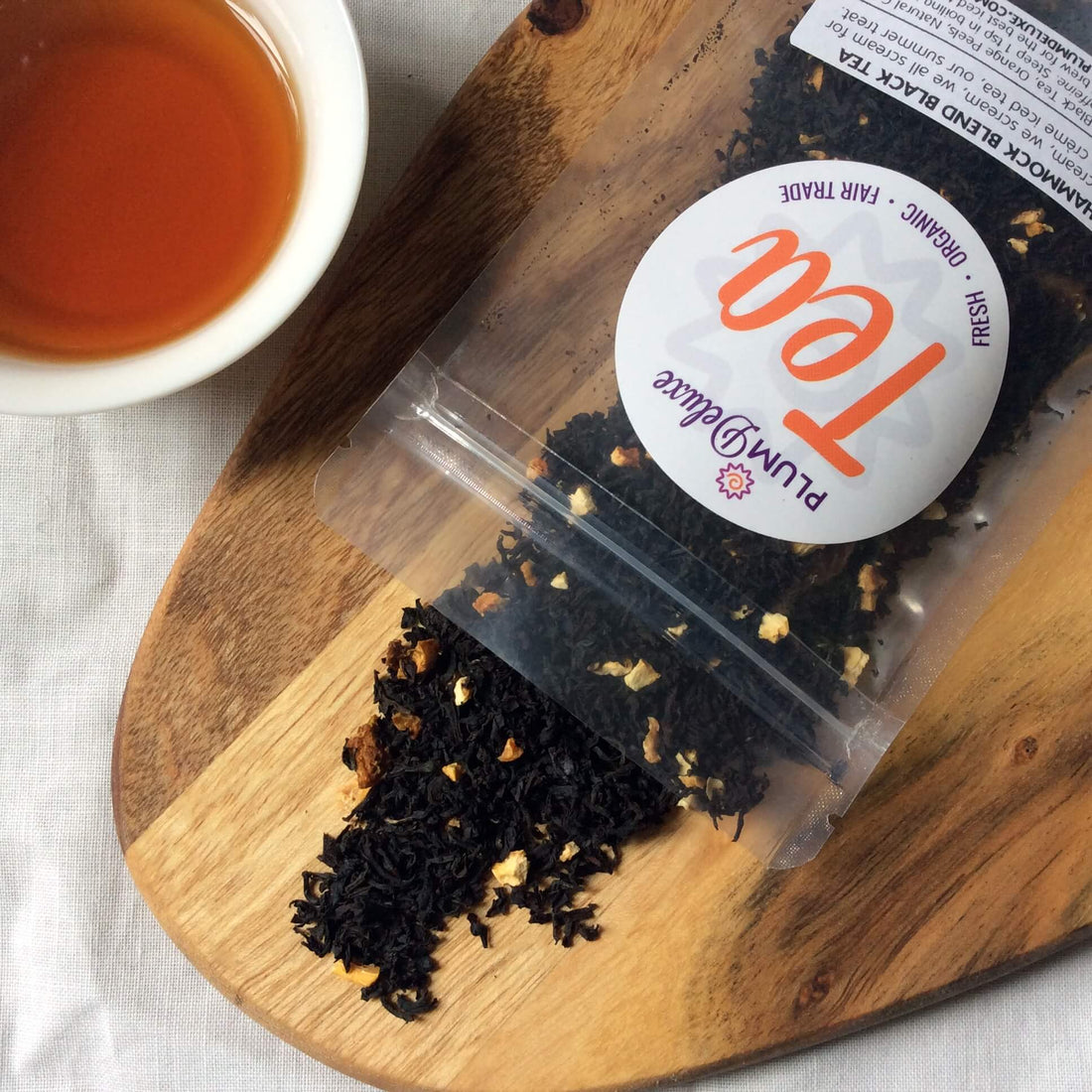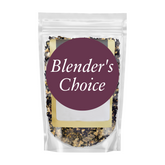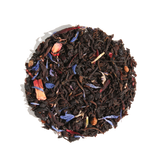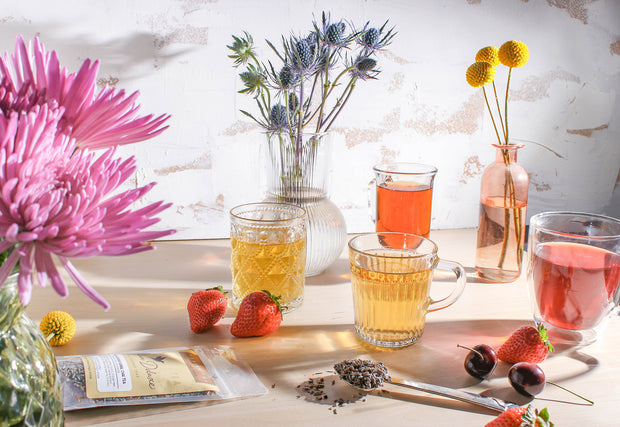Loose leaf tea is gaining in popularity, with many people trying it for the first time. Not sure what to buy or how to brew it? Here’s our guide to loose leaf tea for beginners.

Choosing Loose Leaf Tea
While tea bags are convenient, most of the flavor is lost, which is why loose leaf tea is best for anyone who truly wishes to enjoy their beverage. You can also re-steep high quality loose leaf teas, making them more economical than bagged teas -- which can generally not be re-steeped --in the long run. While loose leaf takes an extra step of preparation, it’s worth it to catch the woodsy tones of an oolong or the savoriness of a green tea. It’s also a way to treat yourself to something special in the midst of a frantic schedule.
A general rule of thumb when looking at tea is the larger the leaf, the higher the quality and the better the flavor. You’ll also want to smell the tea to make sure it hasn’t gone stale. Generally speaking, if it smells good it will taste good! For herbal teas, you want to focus on color and scent; if the herbs are faded or don’t have a fragrance, they are probably too old.
And always, always, always check your ingredients! If a tea is full or artificial flavors or sweeteners, there’s a good chance those things are trying to hide a low quality tea. This is also a good opportunity to see if your tea is fair trade or organic, especially if that’s important to you.

Best Loose Leaf Tea for Beginners
One of the biggest complaints beginners have about tea is the bitterness. So, why not start with teas that are on the sweeter end? Honeybush herbal teas are naturally sweet and easy to avoid oversteeping. We have paired honeybush with some excellent combinations, such as Happy Hour hibiscus-lime, Self Care apricot-elderberry, or Chocolate Hazelnut. We also have some sweeter tea blends overall, such as coconut macaron. (Tip: Try sweet teas or dessert teas first before adding sweetener so you know how much you need to add.)
Other great loose leaf teas for beginners are anything with fruit -- think oranges, peaches, berries. The tart and citrus flavors balance out the tannins in tea and can create a nice balance; that is likely one of the reasons Earl Grey (black tea with bergamot, a type of orange) is perhaps the most popular tea blend of all time. Our Gratitude Blend strawberry Earl Grey is one of our best sellers! White teas are often paired naturally with fruit (example, we do a peach/pear white), but be sure to avoid bitterness by not using boiling water. Herbal teas are often paired with fruit for a melange of flavor (our Peach Bellini herbal blend is a good example). Dragonfruit, pineapple, blackberry -- the options are endless.
For the best tasting tea for non-tea drinker folks, go for the easy wins such as dessert teas that have a natural sweetness and playfulness, or teas for coffee drinkers such as anything hazelnut.
Lastly, spicy chai blends can often overcome the ‘bad’ tea taste -- they’re sometimes just as much spices as tea itself. Full Moon masala chai is a more traditional blend with black tea, but we sell a caramel maté chai that is very popular (the hint of smokiness from the maté creates a wonderful balance). We also make a Portland Rose City Chai with blackberry and rose that is both sweet and spicy if you like your tea to have a floral note.

Making Loose Leaf Tea
Making loose leaf tea is easy, no matter if you're a beginner or veteran. If you happen to have some tea filter bags, just slip your loose leaf tea inside and steep away! They’re especially great for traveling or taking your tea to the office. If you’re a fan of reusable products, a mesh tea infuser or tea nest are perfect for everyday brewing.
Your trusty old French press is also perfect for brewing tea! Nothing special here; use the press like you always do and use tea leaves instead of coffee. Just make sure to clean the press very well first so you don’t get any coffee flavors mixed with your tea (unless you’re a dirty chai lover).
The type of tea you are drinking will determine your water temperature and steeping times, both of which affect the taste of the tea. Your water itself can even change the flavor of the final beverage, so use filtered or spring water; treated water has too many chemicals that can make your tea taste bad. Heat the water according to the kind of tea you are brewing: full boil for black teas, just boiling for greens, and not quite boiling for whites. Pour the heated water over the tea leaves and allow them to steep for the recommended time, which should be noted somewhere on the tea’s packaging (generally 3-5 minutes).
And that’s it! That’s our guide to loose leaf tea for beginners, and it’s surprisingly simple. Go forth and brew!

![Spring Break Tea Variety Pack [6-Pack Variety of Flavors]](http://www.plumdeluxe.com/cdn/shop/files/spring-break-pack.jpg?v=1740682266&width=165)















